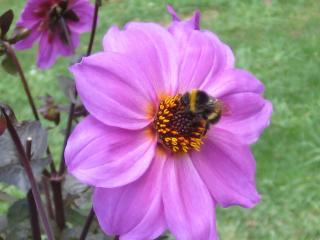Bumblebees have so far been intercepted in Queensland, Victoria and recently in Western Australia when a live bee was found in a punnet of raspberries from Tasmania by a member of the public and brought into the Department of Agriculture and Food’s Pest and Disease Information Service (PaDIS) for identification.
The introduction of bumblebees in Australia could cause:
- competition for nectar with native nectar feeders like birds, possums and honeybees
- inefficient pollination of native flora
- more efficient pollination of ‘sleeper weeds’, which are exotic weeds which are currently not widely spread because they rely on bumblebees for pollination.
Bumblebees can nest in compost heaps or other garden features. They defend their nest vigorously and can sting repeatedly, which may cause a severe allergic reaction in some people.
Appearance
Bumblebees are hairier and more heavily built than most other bees or wasps found in Australia. People say they look ‘cute and cuddly’. The large earth bumblebee is black with one yellow/ochre band across the front of the thorax and another yellow/ochre band across the abdomen. An important identifying feature of the large earth bumblebee is the tip of the abdomen, which is buff or white in colour.
Large earth bumblebee queens are 30–35mm in length and make a loud buzzing sound during flight. Workers are highly variable in size, ranging from 8–22mm in length. Males are similar in size and appearance to large workers.

